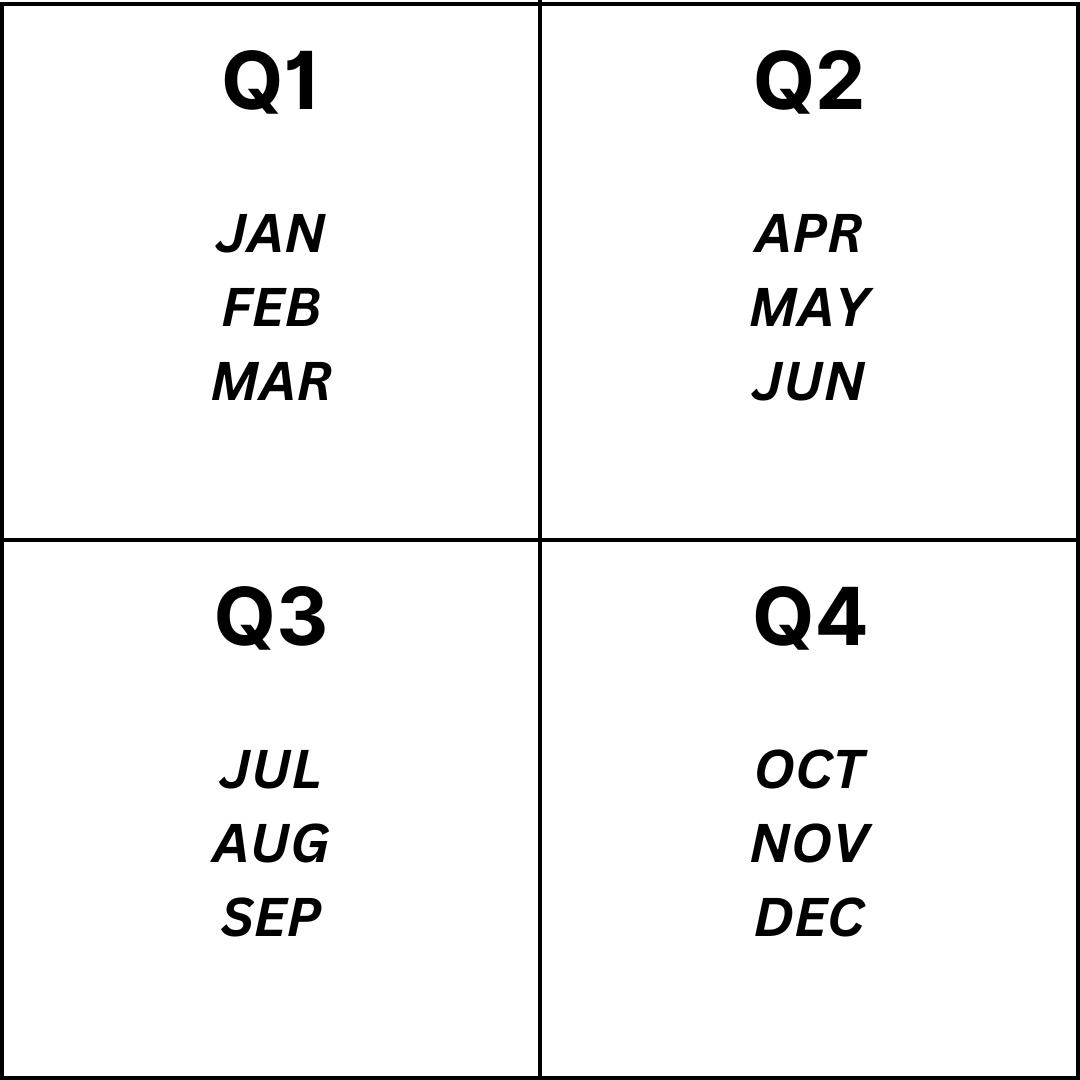Simplify Goal Setting With The Four Bucket Approach

A new year brings another year of potential opportunities.
Goals are something that is commonly thought of when starting a new year. Thinking about goals one would like to set for the year can be overwhelming. These goals steer how the year may go and potentially your life.
A while back, I listened to an interesting podcast episode from Noah Kagan on goals. He shared his approach to thinking of plans for the year.
He creates goals in four different buckets:
- Work (Career/Side hustle)
- Workout (Health)
- Personal
- Places To Visit (Fun/Travel)
Applying this approach to goal setting has helped me think of a range of plans to help drive the direction I want my year and life to go. It allows me to create goals that help me grow and have fun.
Four Category Goal Setting Approach
By creating goals in each of the four categories, you help diversify your goals to help you grow in different areas of your life.
Work
In the work category, create goals that are related to your career. If you have a side hustle, you can also put objectives related to that in this category.
Examples:
- Improve my knowledge of using CREO CAD software by completing "Course A" by March 2023
- Create a website for my business by June 2023
Workout
In the workout category, create goals related to your health. They can be weight-related, workout consistency, or an athletic challenge you want to accomplish.
Examples:
- Run a half marathon by November 2023
- Lose 40 pounds by December 2023
- Workout at least three times a week throughout the year
Personal
In the personal category, create goals you would like to accomplish. It could be exploring hobbies you want to get better at or learning something new. You could also think of financial goals you would like to reach.
Examples:
- Read at least 20 books by December 2023
- Learn to speak the basics of the Italian language by completing "Course B" by September 2023
Places to Visit
Create goals for places you would like to visit this year in the places to visit category. They can be in the same state or out of state. There are many benefits to exploring different locations. Traveling helps you expand your knowledge of different cultures and explore other parts of this world outside your immediate surroundings.
Examples:
- Travel to the Grand Canyon by March 2023
- Travel to Lisbon, Portugal by November 2023
- Eat at "Fancy Restaurant C" by June 2023
- See "Band Y" perform on April 2023
Create SMART Goals
When creating your goals for each category, follow the SMART goal framework. In case you are not aware of the SMART goal framework, your goals should be:
- Specific
- Measurable
- Actionable
- Realistic
- Timely
Non-SMART Goal Example:
- Lose weight
- Learn Italian
SMART Goal Example:
- Lose 40 pounds by December 2023
- Learn to speak the basics of the Italian language by completing "Course B" by September 2023
The non-SMART goal is vague, and you don't know when you will complete the objective. On the other hand, the SMART goal is specific. You know when you will complete it and by when you need to complete it.
When creating your list of SMART goals, hold off on adding a deadline to your goal until you find out which quarter of the year to work on it.
Assign Your Goals To Quarters
Once you carve out some time to think of SMART goals you want to complete this year for each category, the next step is determining which quarter you wish to complete it.
Some goals will be year-round, while for others, you can focus on a specific quarter of the year.

Review your goals for the year and spread them out to a specific quarter or year-round. Only pile on a few objectives for each quarter and year-round.
Once you determine which quarter you want to complete a goal, update the goal to have a deadline.
Working in quarters gives you some pressure to complete your goals instead of procrastinating and waiting until the end of the year.
You may have experienced this while in school, procrastinating on an assignment until it was close to the deadline. Three months is a lesser time, but not too little of a time window to complete some more meaningful goals.
You can go even more granular and set a focus for each month of the quarter. Up to you. Experiment and see what works for you.
Review Your Goals Frequently
Once you have your SMART goals set with a deadline you would like to complete them, review them often.
If you see them frequently, you are more likely to complete them since they are top of mind.
You can do this daily or weekly—experiment with what works for you. You can have your goals on a sheet of paper, some digital app like Evernote, or on a sticky note posted somewhere you see often.
Each week assess your progress on the goals for the quarter. You may discover that the goal is not something you want to complete. That is fine. It is your life. You decide what you want to prioritize. People change their minds often, which is another reason to review your goals frequently.
Conclusion
Each new year, we create goals to help steer the direction where we would like our life to go for the year and in general.
A simple framework like the four-category approach above can help you simplify the thinking process of where you would like your life to grow in different areas.
References
- Article: Goals by Noah Kagan
- Video: How To Set & Achieve Goals w/ Noah Kagan